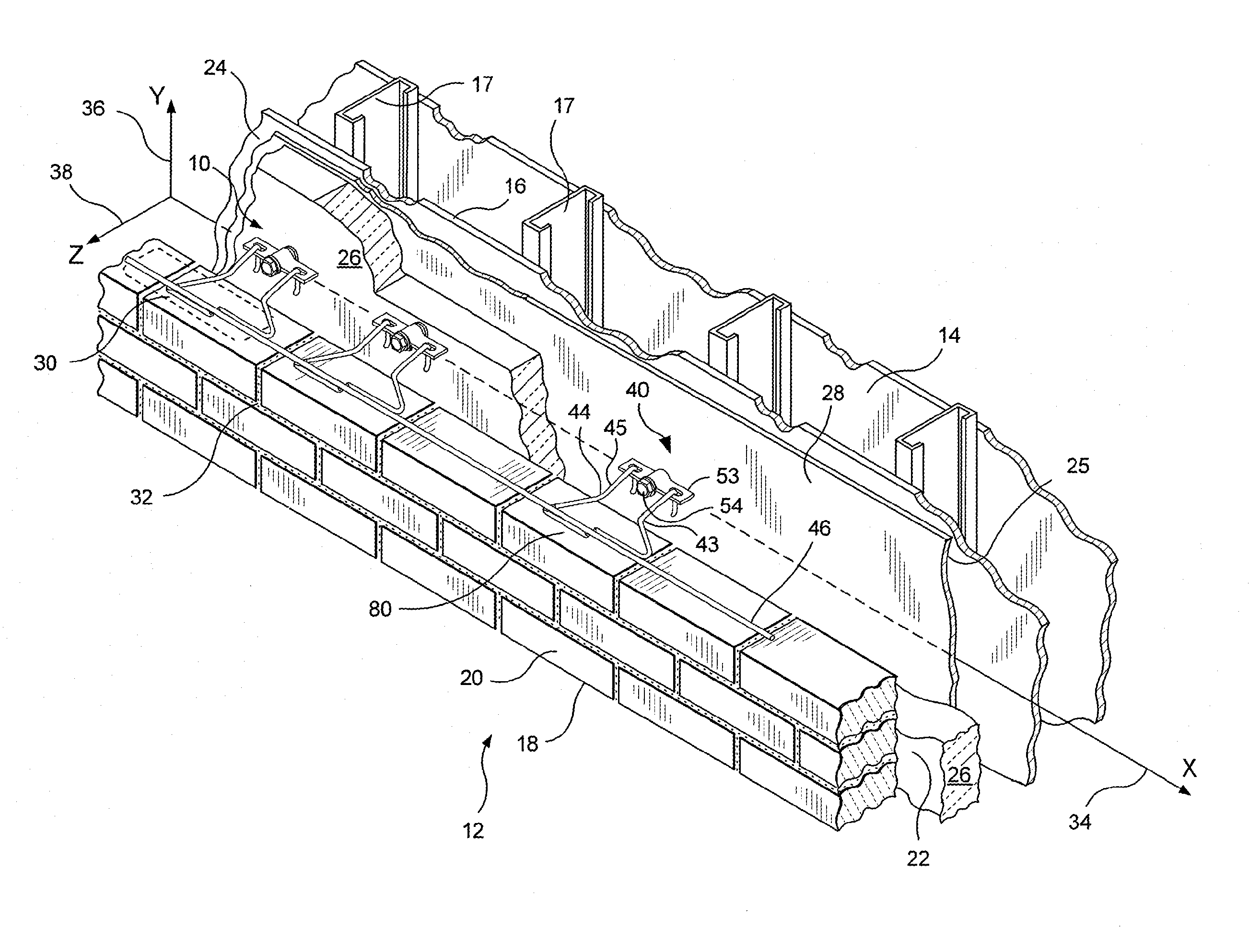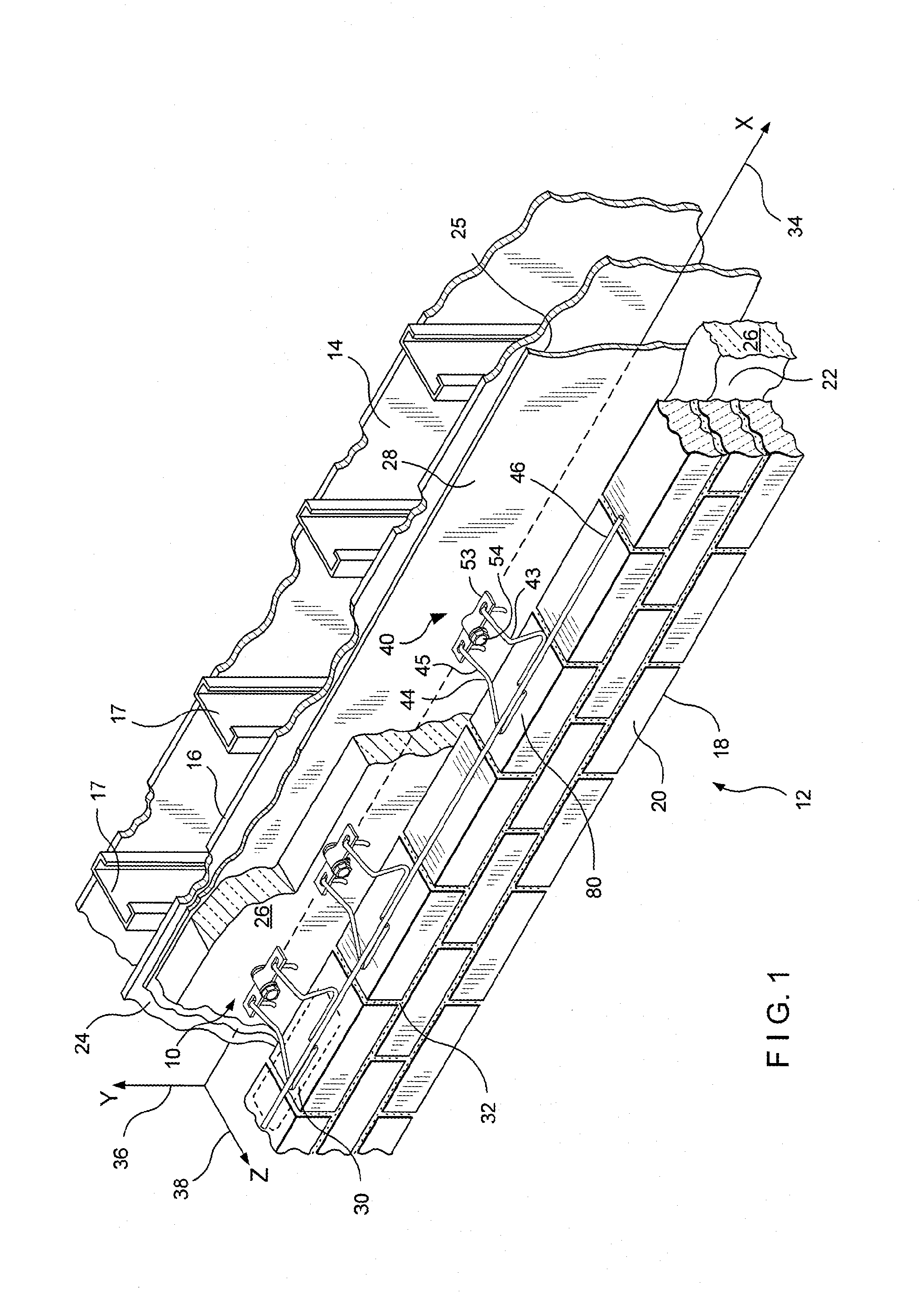Thermally isolated anchoring system
a technology of thermal isolation and anchoring system, which is applied in the direction of structural elements, buildings, building components, etc., can solve the problems of affecting the integrity of the system, affecting the stability of the system, so as to prevent air infiltration, prevent pin-point loading, and prevent disengagement.
- Summary
- Abstract
- Description
- Claims
- Application Information
AI Technical Summary
Benefits of technology
Problems solved by technology
Method used
Image
Examples
Embodiment Construction
[0060]Before entering into the detailed Description of the Preferred Embodiments, several terms which will be revisited later are defined. These terms are relevant to discussions of innovations introduced by the improvements of this disclosure that overcome the deficits of the prior art devices.
[0061]In the embodiments described hereinbelow, the inner wythe is provided with insulation. In both the dry wall construction and in the masonry block backup wall construction, shown herein, the insulation is applied to the outer surface thereof. Recently, building codes have required that after the anchoring system is installed and, prior to the inner wythe being closed up, that an inspection be made for insulation integrity to ensure that the insulation prevents infiltration of air and moisture. The term as used herein is defined in the same sense as the building code in that, “insulation integrity” means that, after the installation of the anchoring system, there is no change or interfere...
PUM
 Login to View More
Login to View More Abstract
Description
Claims
Application Information
 Login to View More
Login to View More - R&D
- Intellectual Property
- Life Sciences
- Materials
- Tech Scout
- Unparalleled Data Quality
- Higher Quality Content
- 60% Fewer Hallucinations
Browse by: Latest US Patents, China's latest patents, Technical Efficacy Thesaurus, Application Domain, Technology Topic, Popular Technical Reports.
© 2025 PatSnap. All rights reserved.Legal|Privacy policy|Modern Slavery Act Transparency Statement|Sitemap|About US| Contact US: help@patsnap.com



